Performance marketing — especially PPC — is a powerful way for marketers to demonstrate their worth.
With PPC campaigns, we’ve carved out our place at the table. Now we’re producers of actual revenue, beyond more qualitative channels like PR and content.
This is good news for digital advertisers. But does Google have other ideas?
Let’s take a closer look at some of the new and ongoing changes to Google AdWords. We’ll also discuss how you might want to take advantage of them.
Ongoing Changes to AdWords
Earlier this year, Google announced changes to AdWords and the Google Display Network (GDN) for this summer:
Change #1: Ad Rank
The Ad Rank threshold change, revealed in May, is twofold. Ad Rank essentially determines the placement of your text ad. A higher Ad Rank means you’re more likely to hit the coveted Position 1 slot.
Ad Rank is calculated by through a number of factors. These include expected click-through rate (CTR), landing page experience, maximum cost-per-click (CPC) bid, and relevance.
Relevance is going to take a more significant role in determining Ad Rank. While base search terms may remain the same, queries may differ due to context. For example, a recent news story mentioning a product name might be more relevant to a query than a product review.
More importantly, depending on the query meaning, PPC bids “may” be weighted more heavily for Ad Rank. This means that higher bids for relevant queries could directly boost your Ad Rank. Bigger ad spends may ultimately win out.
Change #2: Enhanced CPC
AdWords is also removing the 30 percent enhanced CPC (ECPC) cap on audience and location dimensions. This doesn’t currently account for device dimensions, so you should still plan to add a mobile bid adjustment.
Google’s official line is that this change will help you drive more quality conversions so you don’t risk losing out on them because your bids were capped. But with ECPC uncapped, you may end up looking at higher overall spend. If you use ECPC, you should watch such PPC campaigns closely.
These changes to Ad Rank thresholds and Enhanced CPC caps have the potential to run up your spend. They may also increase competition from larger advertisers with bigger budgets. Still, not necessarily anything earthshaking here.
Ongoing Changes to PLAs the Google Display Network
Google is also taking its Retail Shopping on Display program out of beta for PPC advertisers who opted in. The test queued up Product Listing Ads (PLAs) to appear on the Google Display Network (GDN).
However, this was only for display in fashion and home decor websites. These brave early adopters will see their ads deployed there over the rest of the summer.
Effectively, with this limited, opt-in test program, Google is pushing more ads to display. And at Marketing Next, the company announced even faster AMP page load speeds for search and GDN ads. GDN ads now load up to five seconds faster than normal. You’re probably starting to see where this is going.

New Attribution Promotes the Changing Customer Journey
Stop me if you’ve heard this before. The customer decision journey is changing.
In response to this, Google is now encouraging advertisers to stop focusing on “last-click attribution.” That is, focus more on upper-funnel clicks instead of tracking the last click a user makes before making a purchase.
After all, that early purchase research is valuable. Plus, if you can track insights on those earlier clicks, you should be better able to understand your customers. You’ll also be able to better direct them to purchase next time, right?
This is why Google is pushing alternative attribution models for PPC campaigns, such as time decay, linear, position-based, and its most prominent model, data-driven attribution (DDA).
In fact, Google has outright stated that “data-driven attribution delivers better results than last-click.” Google is promoting how its machine learning-based attribution system picks up not only on deep-funnel activity but also upper-funnel activity, leading to more overall conversions.
Sounds good, doesn’t it?
Chrome Moves to Ad Filtering
And now we move to arguably the biggest news in digital at the moment. Google recently announced a built-in ad blocker — or as the search giant prefers to call it, an “ad filter” — to an upcoming version of Chrome. This feature will remove “annoying, intrusive ads on the web.” This is a story so big, it has made its way outside of ad tech circles onto the pages of The Wall Street Journal, Fortune Magazine and Wired, to name just a few.
To be fair, Google’s claims do appear justified. There’s definitely no shortage of annoying pop-up and timed prestitial ads online. And they significantly detract from page load speeds and overall user experience.
Plus, the company has released, by way of DoubleClick, a full guide to making sure your ads are not “annoying” and will not be filtered out by the new version of Chrome.
Which ads are most likely to get through unscathed? According to DoubleClick, for mobile, “small ads that stick to the top or bottom of the screen,” and for desktop, takeovers. Presumably, we’ll see GDN standards converge with the ad filter’s guidelines.
So, What Do All of These Mean?
Google knows PPC continues to be a powerful, profitable category. PPC will generate significant revenue this year and next – that’s a fact.
But let’s be honest – Google is also a corporation. And like many corporations, it seeks to grow its revenue and profits with new opportunities. Given the growth in mobile and the lengthening of the sales funnel in so many verticals, analysts have already predicted that display spend would outpace search spend.
So why is Google moving in this direction?
Being a corporation that wants to grow its business, it’s simply following the money. Some of the changes to further monetize AdWords, such as the Ad Rank threshold and ECPC changes, are ways for Google to incrementally grow AdWords revenue from PPC campaigns.
However, the company is clearly going after bigger fish. That means gently nudging advertisers like you towards adding more display to your marketing mix.
Revisiting GDN: How Should You Approach This?
As you know, GDN is a huge display ad network that runs ads on over two million websites that reach more than 90% of the internet audience. GDN offers text, banner, Gmail, and in-app ad options. And for some time, let’s just say it has not always played nicely with traditional search campaigns for PPC. The most well-known option for running search campaigns in tandem with GDN is, of course, Search Network with Display Select campaigns.
Unfortunately, even Google does not necessarily recommend Search with Display Select for advertisers interested in running campaigns on both platforms. For one thing, these two channels often message to customers in very different funnel stages. Ultimately, this can often result in GDN campaigns eating up campaign budget with very few conversions from prospects who, being at the very top of the funnel, have little to no immediate purchasing intent.
So what should you, as a PPC advertiser, do?
What you’ve always done — focus on driving the best return on your ad spend. Stay focused on conversions, revenue, overall profits or efficiency, whichever suits your goals.
Every marketing operation is different. And you are the expert on the best ways to run your specific campaigns. Not Google. If this means you continue to focus on lower-funnel campaigns through channels such as search to drive the best ROI, so be it.
No one, not even Google, knows your campaigns or your specific business needs better than you do.
Some Tips for Getting Into GDN from PPC
That said, if you’re a digital advertiser focused on PPC, but considering GDN, I recommend the following:
- Focus on what works, but don’t be afraid to test. As an experienced PPC professional, you already have a strong sense of what works in digital. Continue driving revenue using the strategies that work best for you. But like with your AdWords campaigns, don’t be afraid to test new campaign types — including GDN.
- Be aware of quick run-ups in spend with low conversion rate. Display campaigns can quickly run through spend, often much faster than PPC. As discussed, because display ads tend to be awareness plays, expect to reach less engaged audiences less likely to convert.
- Differentiate messaging. At the risk of stating the obvious, customers finding your PPC ads through search are deeper in the funnel than those served a GDN banner ad. Resist the urge to copy-paste. Make sure you’re using proper messaging for intent-driven search customers. Use different messaging where needed for higher-funnel, lower-engagement GDN customers.
- Consider GDN for remarketing. One of the most powerful ways to use GDN is remarketing. You can use tactics such as in-market audiences (which targets audiences by the history of related searches) and Google’s newly announced life events feature (which targets audiences based on major life events such as graduations and marriages). Remarketing can be a powerful way to drive conversions of significantly higher quality. However, I recommend also instituting frequency caps to ensure you’re not inundating your audience with the same ad units.
- Be mindful of the guidelines for Chrome’s upcoming ad filter. As mentioned, a future version of Chrome will, in fact, filter out “annoying” ad units. Make sure your ads conform to the guidelines. And of course, stay on the lookout for any future additions or specifics.
Conclusion
That should more or less cover the direction that Google seems to be not-so-subtly nudging digital towards. In other words, to more top-of-funnel in general, and most likely GDN in specific.
This change is likely happening because Google is a company that needs to keep growing its revenue over time. But now that you’re forewarned, you may want to keep an eye out for future developments along these lines.
Image Credits
Featured Image and In-post Images: Pixabay

